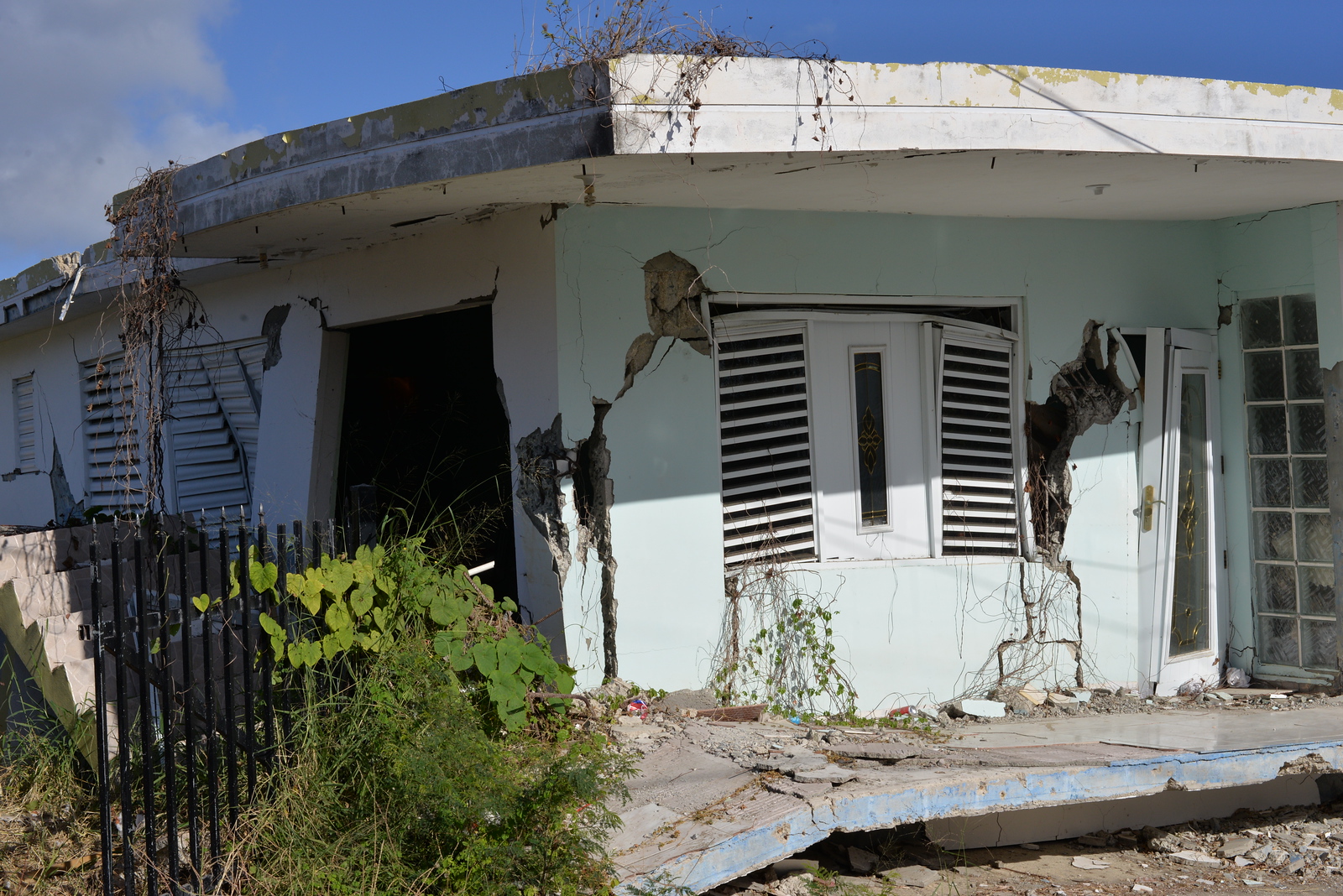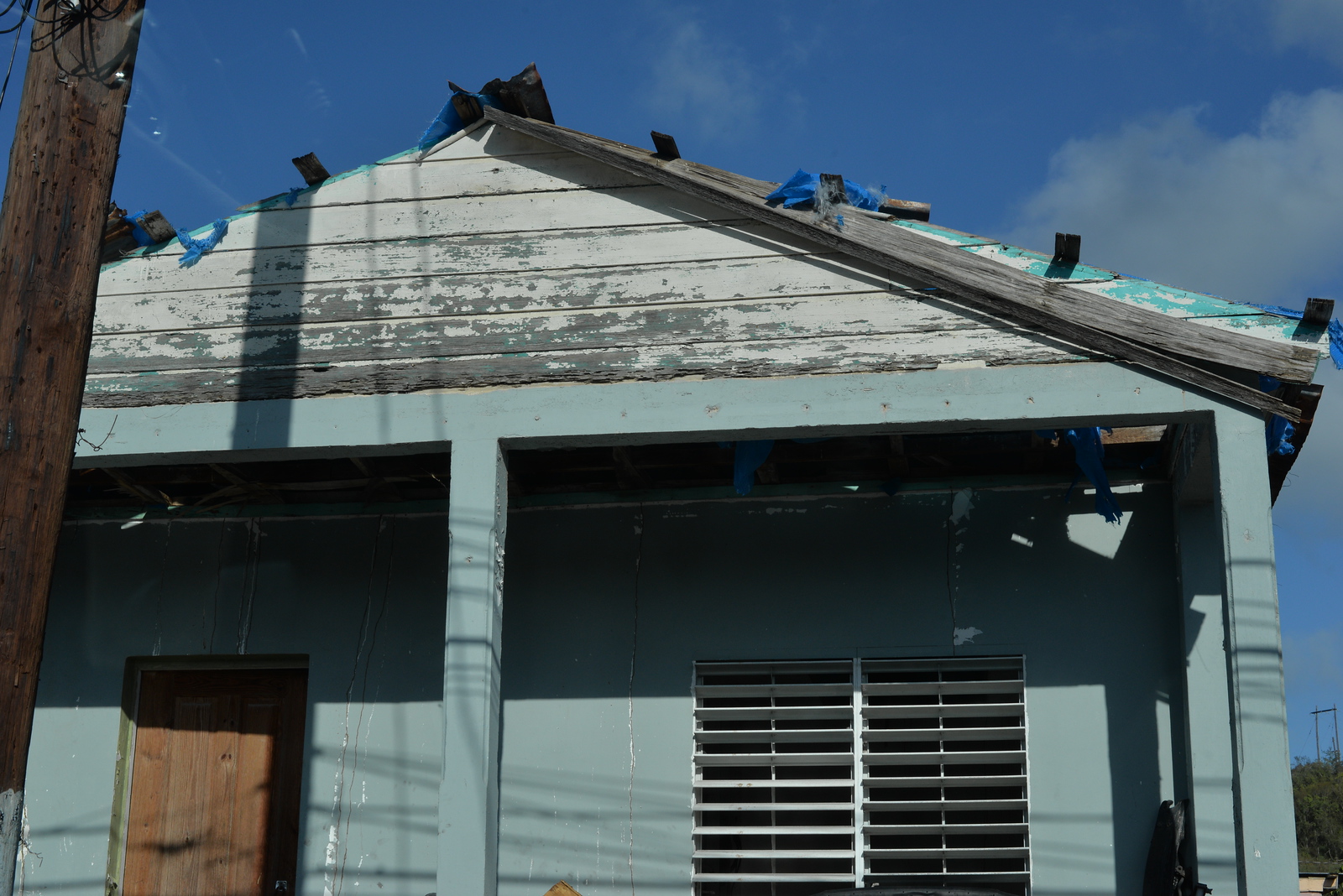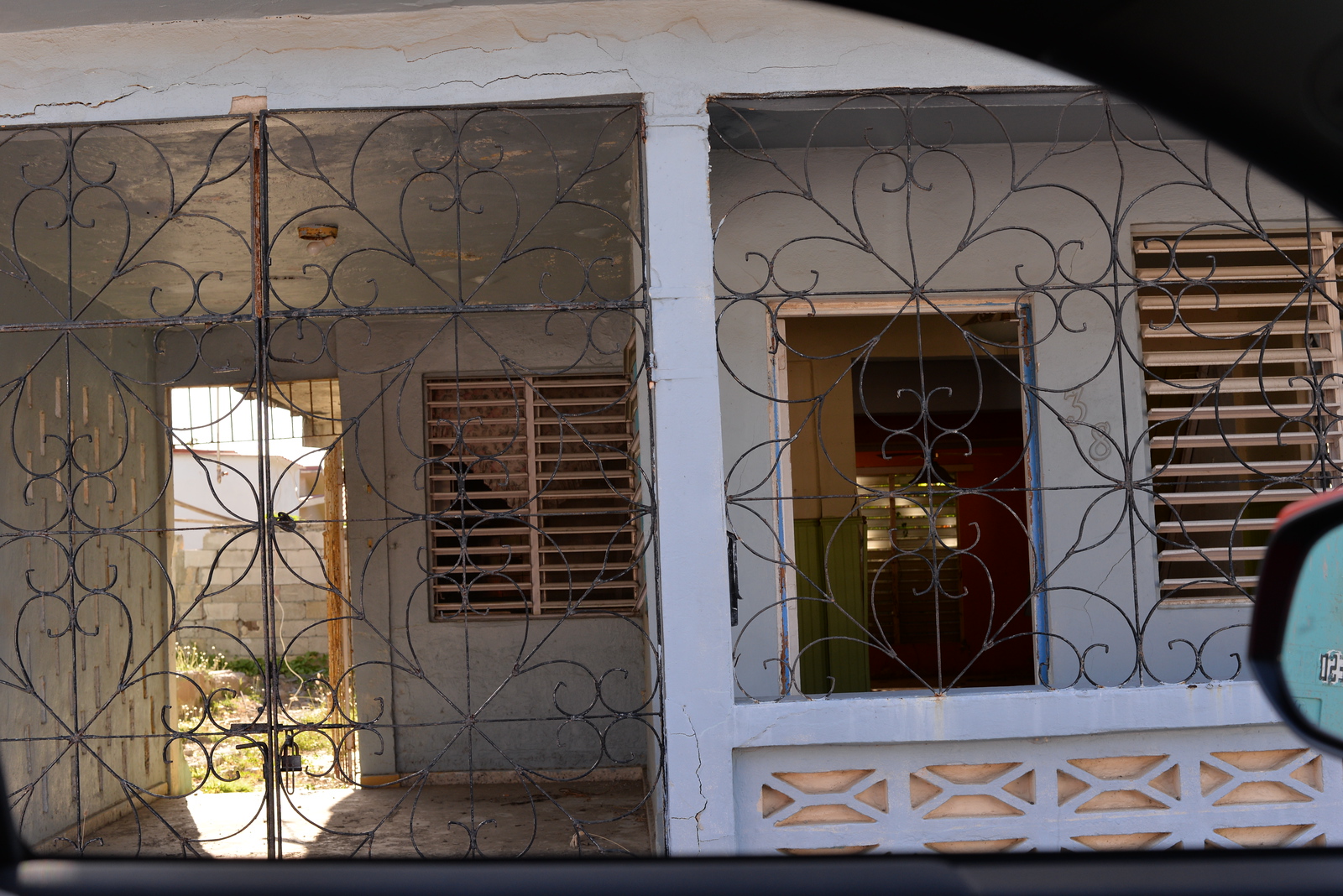More than a year after having included defunct company Ochoa Fertilizer in the National Priorities List of its Superfund program, cleanup of the contaminated land in the Esperanza neighborhood in Guánica, coordinated by the U.S. Environmental Protection Agency (EPA) has yet to get off the ground.
The federal agency had estimated that emergency cleanup work would begin last July and has continued to push back the start date, an investigation by the Center for Investigative Journalism (CPI, in Spanish) found. The most recent date the agency released is January 2024 to decontaminate the backyards of 19 properties in the neighborhood.
Part of this community, one of the most affected by the 2020 earthquakes in the southern region of Puerto Rico, has been contaminated by polychlorinated biphenyls (PCBs) and other substances for more than three decades because of industrial activity in the area. According to data from research firm Estudios Técnicos published in February 2023, 44% of the residences in the neighborhood were vacant or underutilized. The houses that collapsed four years ago are still there, there’s rubble on which a layer of vegetation grows, and a deafening silence prevails much of the time. Guánica is the town with one of the highest poverty levels in Puerto Rico, and the one with the highest population drain in the past 10 years.
Last March, the EPA reached an agreement with multinational W.R. Grace, the current owner of the land from which PCBs and other pollutants drifted through stormwater. Under the agreement, the company will contribute $10 million to remove the contaminated land and investigate what other areas were affected. If necessary, it will also take runoff control measures within one year, which began December 7.
When asked why the approval of the work plan, which they estimated would begin during the summer, was delayed, W.R. Grace said the process to begin the removal of contaminated land must follow several steps and that although they started in March, they were unable to complete them in the estimated time.
“This includes talking to each property owner to get their consent to work on their property, getting the necessary permits from the government of Puerto Rico and federal agencies, and completing the SOP [Site Operation Plan] to get EPA approval,” it stated in writing to the CPI.
EPA agreed with W.R. Grace on the reasons for the delay and added that the efforts they had to make to “find the appropriate contractors and PCB waste disposal facilities in both Puerto Rico and the United States” also played a role.
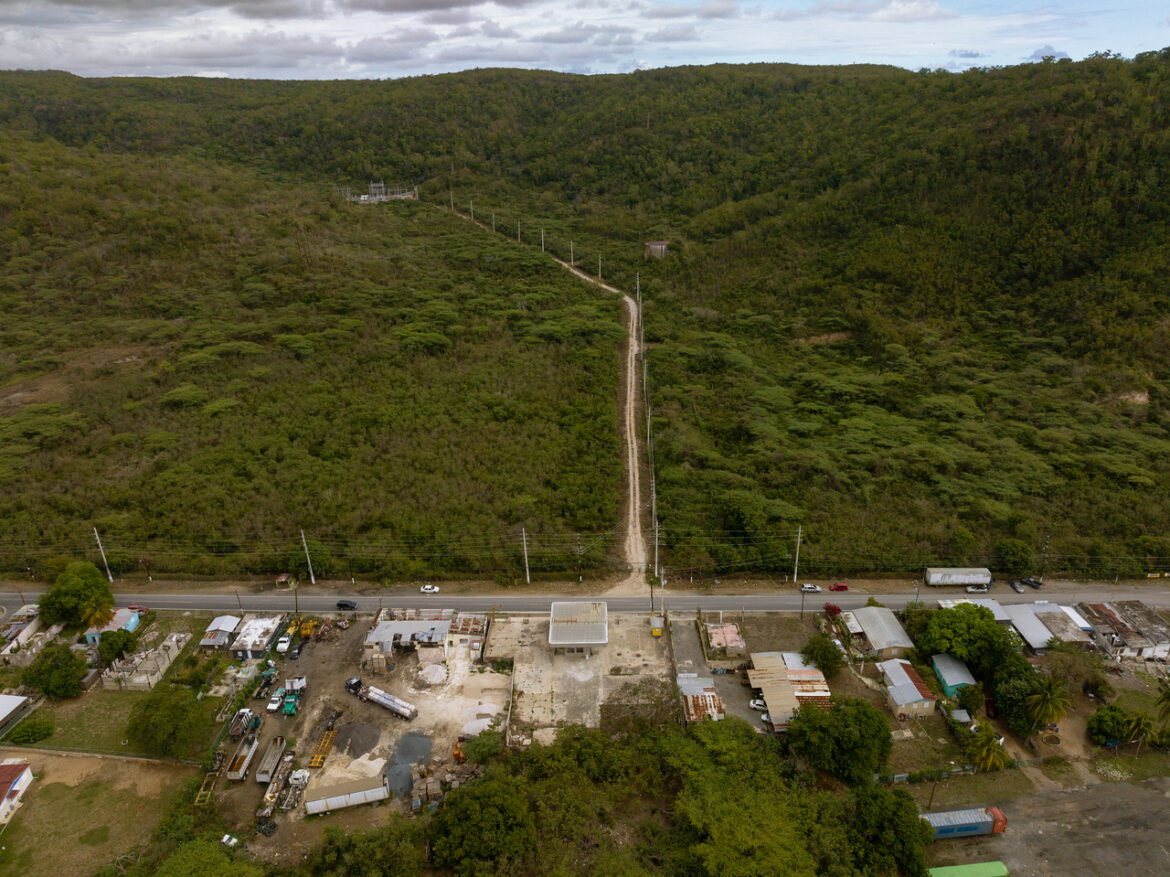
Photo by Jorge Ramírez Portela | Centro de Periodismo Investigativo
PCBs are synthetic chemical compounds whose use has been prohibited in the United States since 1979, and which were used as lubricants in electrical transformers. Its health impact includes conditions such as skin and liver cancer, dermatological conditions, impact on the immune system, and impact on children’s cognitive development during pregnancy.
This North American multinational dedicated to the sale of chemical products has a history of environmental violations, and in 2014 — after declaring bankruptcy — it reimbursed the EPA and other federal agencies more than $63 million for the cleanup of 39 sites affected by different contaminants in 21 states. In Puerto Rico, it operates through a company called Guánica-Caribe Land Development Corporation incorporated in the 1990s after dismantling the facilities in the contaminated area.
W.R. Grace bought the operation responsible for the contamination in 1959. Before it was known as Gonzalez Chemical – and later as the Caribe Nitrogen Corporation – and was a failed project of the government of Puerto Rico to boost the municipality’s economy. The inadequate management of chemical products affected the community since it opened its doors in 1957, the defunct newspaper El Mundo documented. During the 1960s, W.R. Grace also bought Ochoa Fertilizer and consolidated them.
EPA handled the case as ‘low priority’
The EPA has been investigating the Ochoa Fertilizer case since 2018. However, both the local and federal governments have known since 1998 of the potential routes of exposure and risk to public health due to the proximity of the contaminated land to homes in the Barriada Esperanza neighborhood and the consumption of fish from the bay that could contain PCBs after confirming that the contaminant had shifted to the bay. The Puerto Rico Environmental Quality Board (EQB) has gathered the information since the 90s.
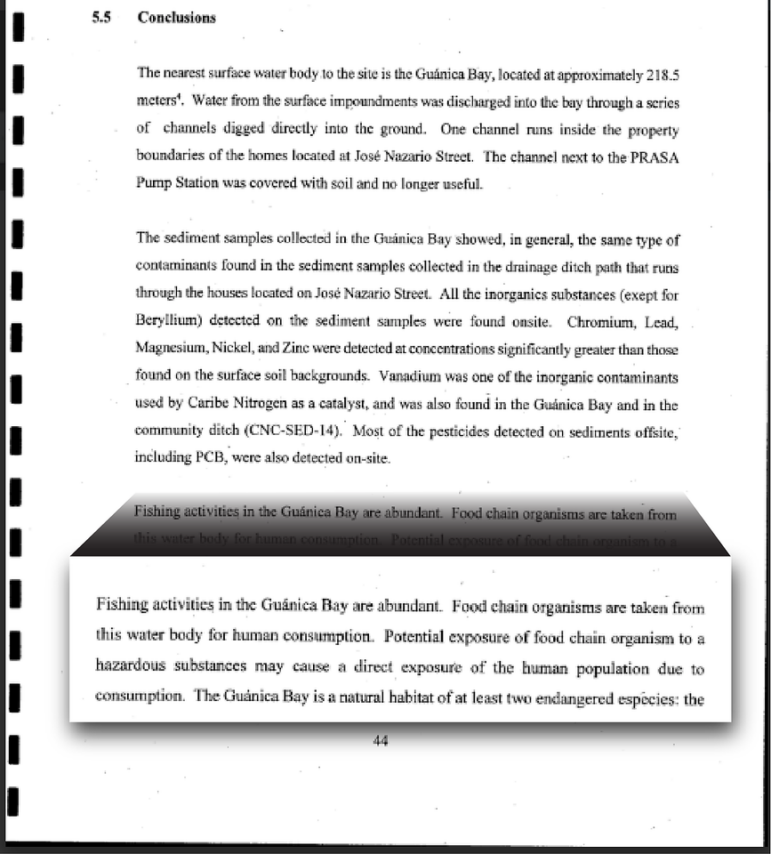
In one of the EQB’s initial reports, the CPI found a discrepancy regarding the priority status assigned to the Ochoa Fertilizer case. In the version of the document included in the federal agency’s digital file, the site appears with a high “priority” recommendation. In a different copy the EPA itself sent to this media outlet last June, the word “high” appears crossed out and replaced by “low.”
The EPA told CPI that in that 1994 report, according to its records, the local agency recommended it as low, and that after completing its investigations, the federal agency also classified it as “low priority” according to a 2001 report. This happened despite evidence pointing to high levels of heavy metals, PCBs, and other contaminants inside and outside Ochoa Fertilizer. At that time the case was put on a waiting list.
The CPI questioned whether this decision contributed to the fact that area communities have been exposed to those contaminants for decades, to which José Font, who at the time of this interview was the deputy director of the EPA’s Caribbean division, responded that it is possible. Font resigned from his position in December of this year. Since 1984 he has held multiple positions at the agency, including division director, and is well versed in the Superfund process.
Regarding how the determination of “low” or “high” priority affects the agency’s investigation of the site to be included in the priority list, the agency limited itself to saying, “It’s expected that an area [Superfund] with a decision of high-priority assessment be investigated more thoroughly sooner than a low-priority one.”
In efforts unrelated to the EPA, and without knowing about the EQB’s work, several scientific teams found high levels of the contaminant in Guánica Bay between 2007 and 2014, in fish and even in blood samples from Guánica residents.
The EPA confirmed this year to residents that these findings led them to revisit the Ochoa Fertilizer case from where the contaminants migrated. Following the investigation by the CPI, and after seven months during which the federal agency did not recognize the fishing and consumption of shellfish caught in the area as an existing problem, the agency accepted that it erred in assuming that fish from the bay were not being consumed.
In Puerto Rico, the average time from when the investigation on a site starts to consider its inclusion in the National Priority List until it is included is five years. The case that has taken the longest took 17 years, according to files the CPI analyzed. It took the EPA 27 years to take on the Guánica case.
“There may be many questions, but the important thing is that you know that it’s now on the [National Priority] List and we’re now doing the work we need to do to remove the PCBs and protect the community,” EPA Region 2 Administrator Lisa García said on the unusual delay.
She said since the site was labeled as one of national priority, it has been addressed with a celerity that is uncommon in this type of emergency response. Her work team also argued that the 2017 hurricanes, the 2020 earthquake, and the pandemic delayed the intervention.
Cancer, asthma, and the anguish of waiting
“How long have they been saying they’re going to clean up, before the hurricane season, and they’ve done nothing? I was in the hospital [in July] because I had an asthma episode that almost killed me, pneumonia, and bronchitis, and I’m still here, you know, I can’t do anything,” Carmen Palau, a resident of the area, told the CPI.
In December 2022, Palau received a letter from the EPA stating that her yard was contaminated with thallium, a metal that can be harmful to health and impact the nervous system.
She has received mixed messages about what will happen on her property. Representatives of the W.R. Grace subsidiary assured her that they would decontaminate her land, but then they said no because as it was not polluted with PCBs, it would not be decontaminated. In October of this year, she got another letter announcing the start of decontamination in the area, but with the warning that getting the notification did not mean that her property would be cleaned up.
Palau lives in one of the 44 homes that the EPA investigated. She is a cancer survivor and has suffered from chronic asthma since she moved to the property with her parents in the 1990s. She now lives with the worry of knowing that she has several contaminants in her yard and that probably no one will do anything to remove them. She resorted to legal advice but given the high costs and not knowing which other residents were in her same situation, she gave up the effort.
“My dad died because of his lung condition, who can say that one thing doesn’t have to do with the other? Because when he lived in New York, we lived there, he didn’t have lung problems, he didn’t have [colon] cancer, he didn’t have COPD [Chronic Obstructive Pulmonary Disease], none of that,” she said.
Margaret Texidor tells a similar story. She was a nurse for 40 years, she moved to Guánica from Bayamón, near San Juan, in 2014, and shortly thereafter she developed colon cancer, a condition that she says no one in her family suffers from. Her residence is in the EPA investigation area, but she hasn’t been approached yet. In the case of Benjamín Toro, who grew up in the neighborhood and is a skin cancer survivor, they told him that in mid-August they would go to sample the property that he inherited that is in the EPA’s research area. His case has not been addressed. Several neighbors interviewed by the CPI agreed in pointing out the high incidence of cancer in the area. A situation they say the government does not address.
The CPI requested information from the Health Department (DS) about its participation, if any, in this process, but got no response. None of the hundreds of documents the CPI reviewed mention that this agency has conducted any type of intervention. The residents also do not remember any contact from the DS with them.
These testimonies are from some of the residents that the CPI interviewed separately and who received visits from a representative of the company responsible for getting permission to access their residences to investigate the presence of PCBs. The company told CPI in writing that it has already contacted all the affected residents and has gotten 90% of the permits they need to expand their investigation in the study area.
Although representatives of W.R. Grace declined to be interviewed, they said in writing that since the property was designated as Superfund, they have worked collaboratively with the EPA and the city to “rebuild a vibrant community.” However, the CPI found in the EPA’s case file that the company tried to discredit the investigation from the start and even disagreed with the area being included in the Superfund program.
Anxiety and uncertainty in the community
Although Guánica residents look forward to a rigorous response from the EPA, several sectors of the community see it as late and insufficient because many have not received detailed information about the status of the cleanup.
“I looked for information about what PCB is, which has me super scared, I’m super nervous here as a Guánica resident, and even though I live far away, that spreads, how far? We don’t know,” Lourdes Feliciano told the CPI. The woman lives around the town center, but she frequently visits the boardwalk area.
“I only know there are 19 houses, but we don’t know which ones they are, how close to mine, we don’t know, we don’t know. And all those things create a lot of uncertainty for me,” a resident told the CPI anonymously. Her property is within the initial study area, land that has not yet been sampled. Her brow was furrowed, and, on multiple occasions, she said that since they first visited her between March and April, she had felt a lot of uncertainty.
“I even spoke with my lawyer about this because I plan to eventually sell to go to the United States, and he already told me that if it’s contaminated, I won’t be able to sell. So that already affects me a lot. There’s a lot of uncertainty, so I don’t know what else to do and what decisions to make — to wait, not to wait,” she added.
Families in and outside the EPA’s initial investigation area are not treated the same during the process: those living outside this area are unaware of the progress of the federal agency and W.R. Grace’s work, while many neighbors within the area in Barriada Esperanza have received multiple visits from representatives of the company that finances the process.
While the risk remains, the EPA’s Caribbean division recommended residents avoid direct exposure to soil, clean their animals’ feet and paws before entering the home, and clean their property regularly using “wet cleaning techniques to avoid dispersing dust,” among other indications. This information was disclosed during the first community meeting that the agency coordinated in March, and which was attended by no more than 20 residents from different neighborhoods of Guánica.
“There were some people there who got a letter, I didn’t get a letter, […] I didn’t sleep that night, honestly, I couldn’t sleep,” recalled Ada Vélez, a neighbor whose home is located right in front of the Guánica boardwalk, but outside of the research area. She told CPI that she found out about the meeting the same day.
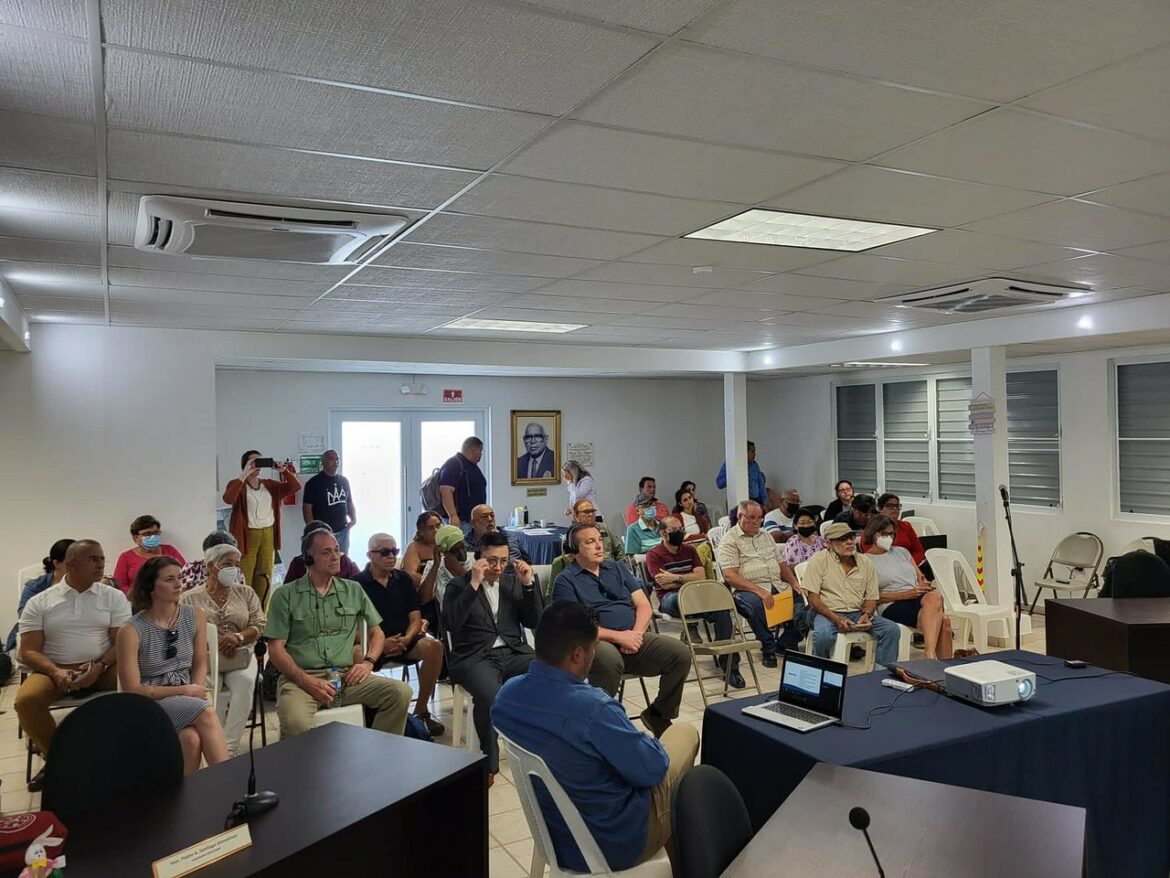
Photo provided by the Municipality of Guánica
“They don’t live here, but we do because these are still our homes. Just because they say this is contaminated you’re going to leave, where are you going to go? You live here, you’re still going to go out to the yard, you’re going to keep touching the earth,” Palau expressed with extreme concern about what she believes are unrealistic measures to protect the neighbors’ health while they wait.
The scant communication with the community about the progress of the work also makes it difficult for the residents — who are still suffering the consequences of the impact of the earthquakes and the pandemic — to support each other. It also hampers their ability to scrutinize this process, which they also believe to be inaccessible due to its technical complexity.
“People don’t understand what a Superfund is,” said Feliciano, who believes that the ways the agency used to inform the population don’t respond to their needs. At least five residents consulted by the CPI agreed on this point, especially due to the limited access to technology and mobility of elderly residents in the area.
Source of contamination still unknown
The EQB’s Superfund division initiated the investigation of Ochoa Fertilizer after being warned about the presence of 55-gallon containers abandoned on the company’s land.
During their first visit to the site in 1991, they reportedly found a stash of 40 broken and highly corroded containers with unknown material deposited directly into the ground. In 1992, factory administrators alleged that it was a warehouse for 20 containers which scientists recommended not removing until they concluded their environmental studies. In 1994, during a second field visit, scientists found that the deposit had been removed.
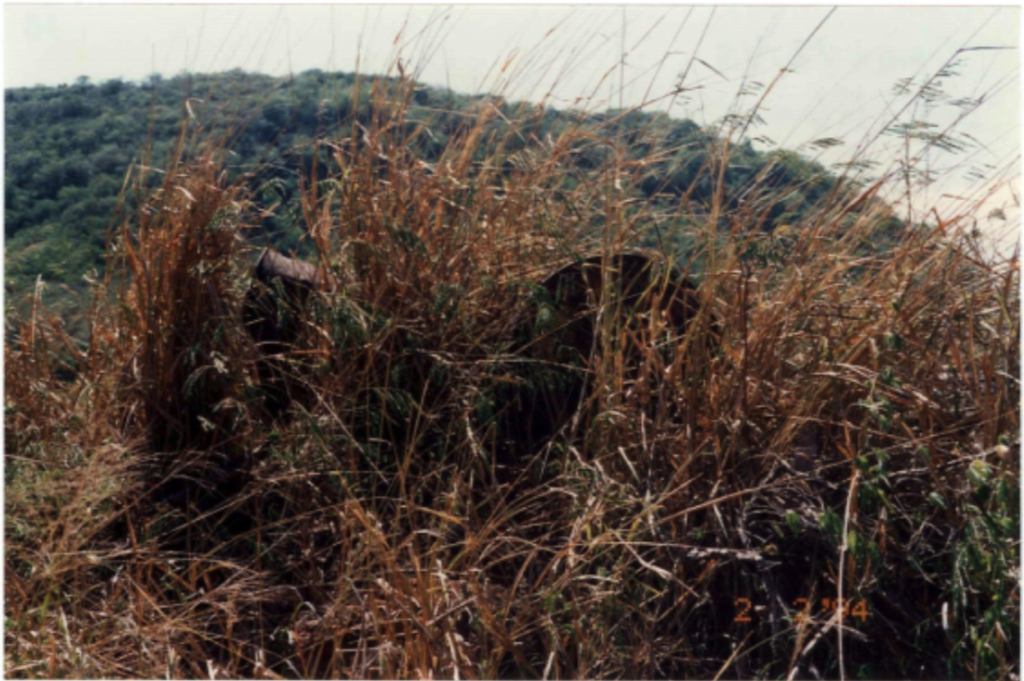
Photo obtained from the EQB file in a 1994 report
During this time, Ochoa Fertilizer conducted two environmental studies that showed that the unknown content was not dangerous. Almost 30 years later, the EPA found the highest level of PCBs in a sample taken in the nearby area where the deposit they classified as illegal was located.
They still don’t know the source of the contamination. “The area’s remedial investigation and feasibility study will determine the nature and extent of the contamination,” the EPA said, without specifying when this is expected to occur.
Próximo en la serie
2 / 4
¡APOYA AL CENTRO DE PERIODISMO INVESTIGATIVO!
Necesitamos tu apoyo para seguir haciendo y ampliando nuestro trabajo.


